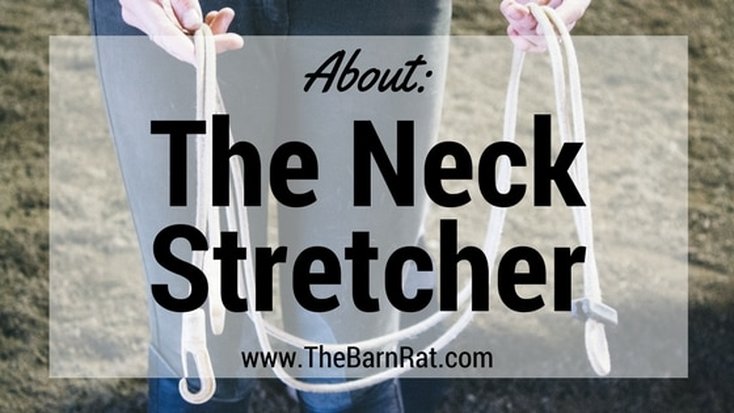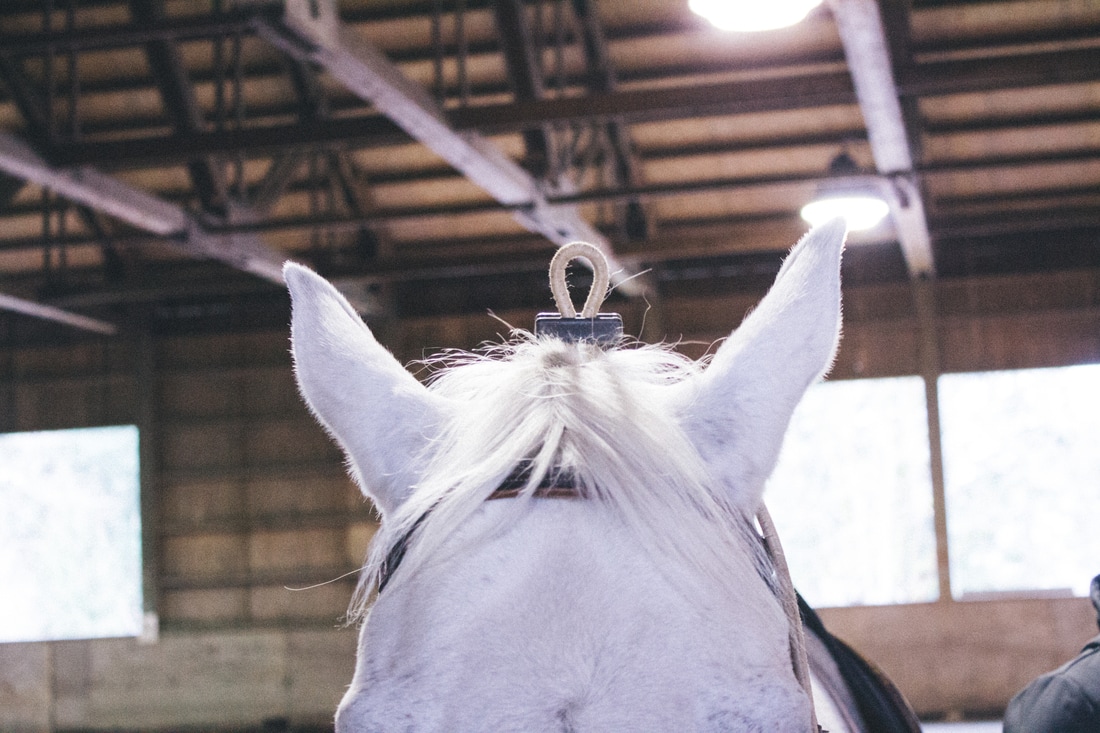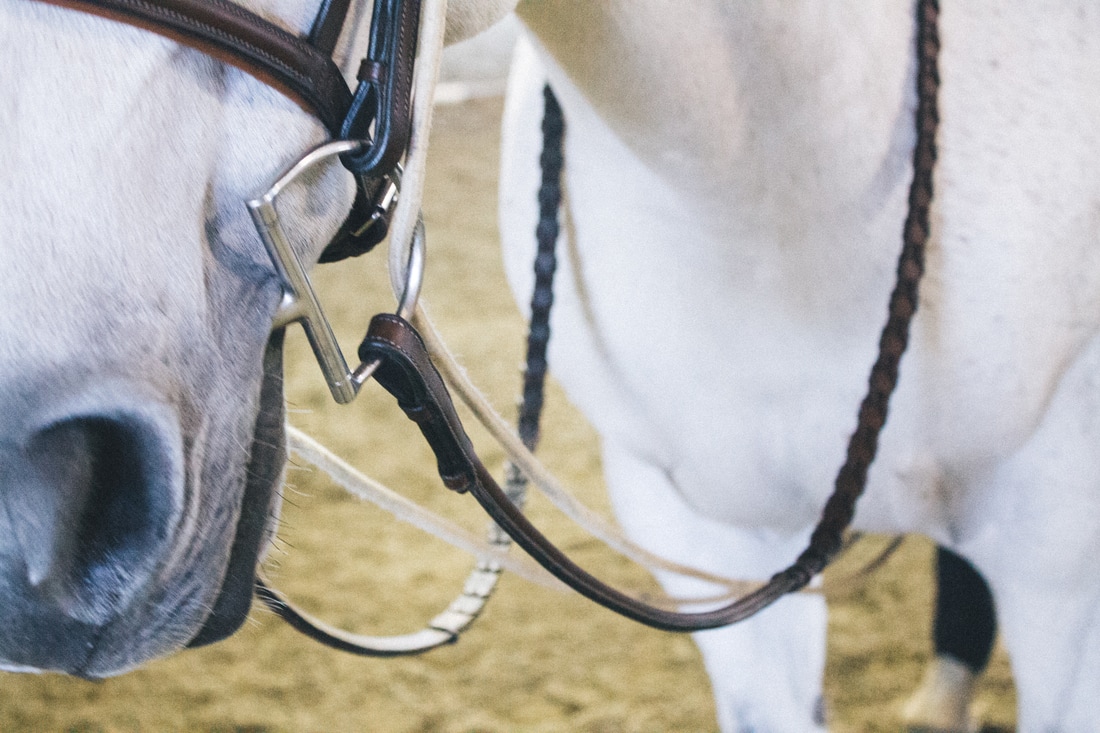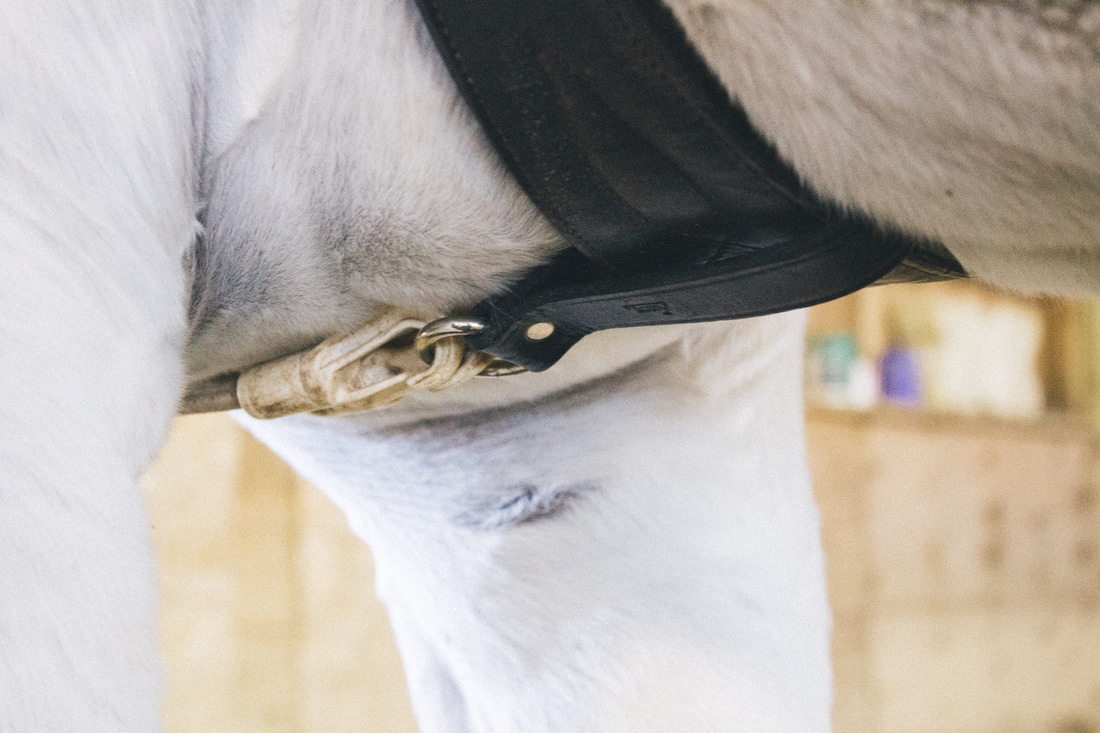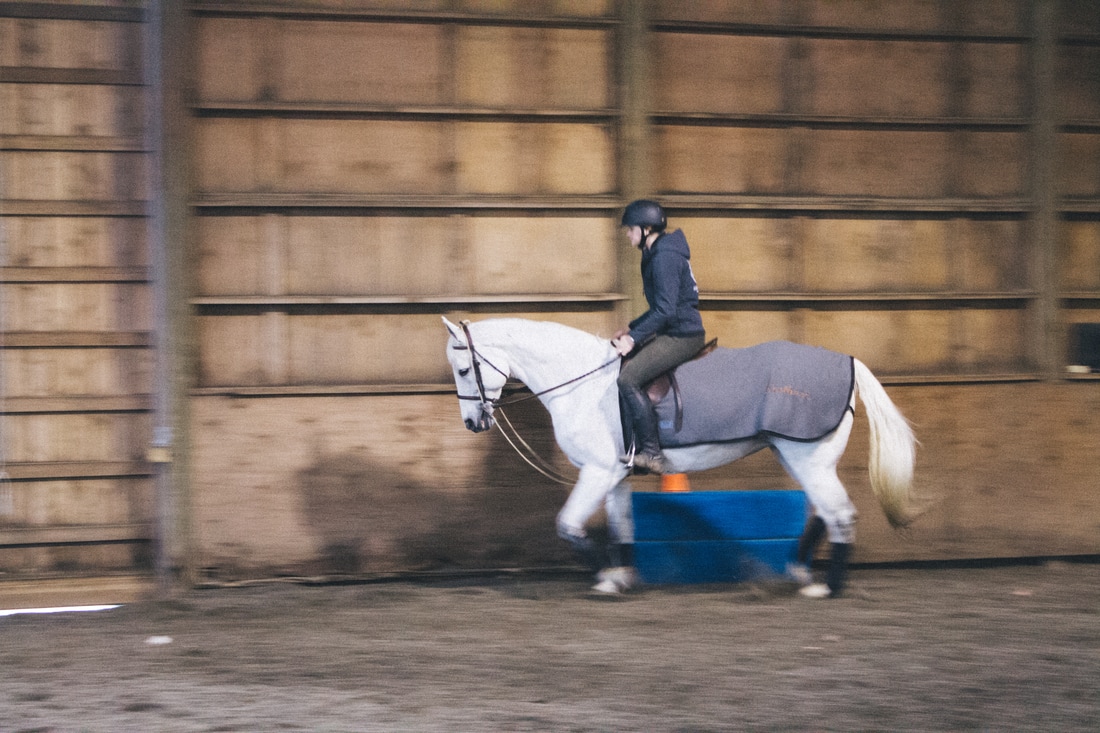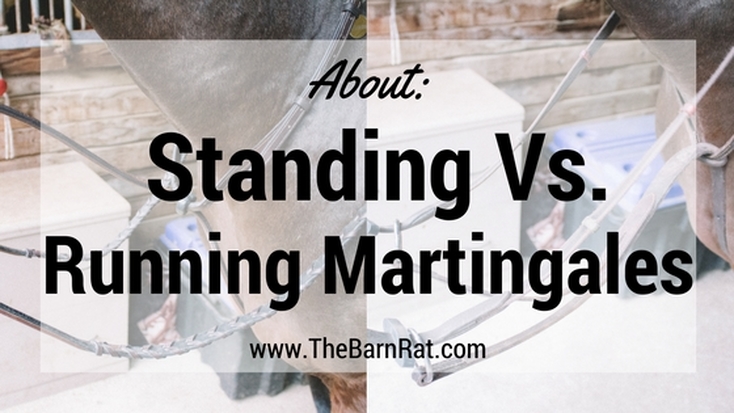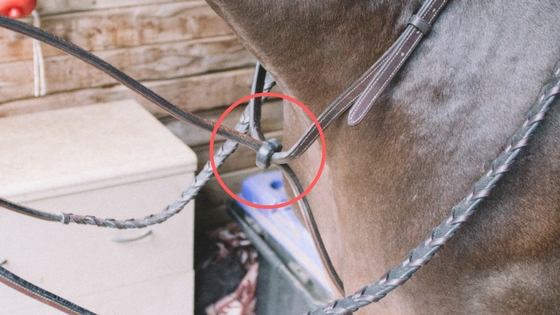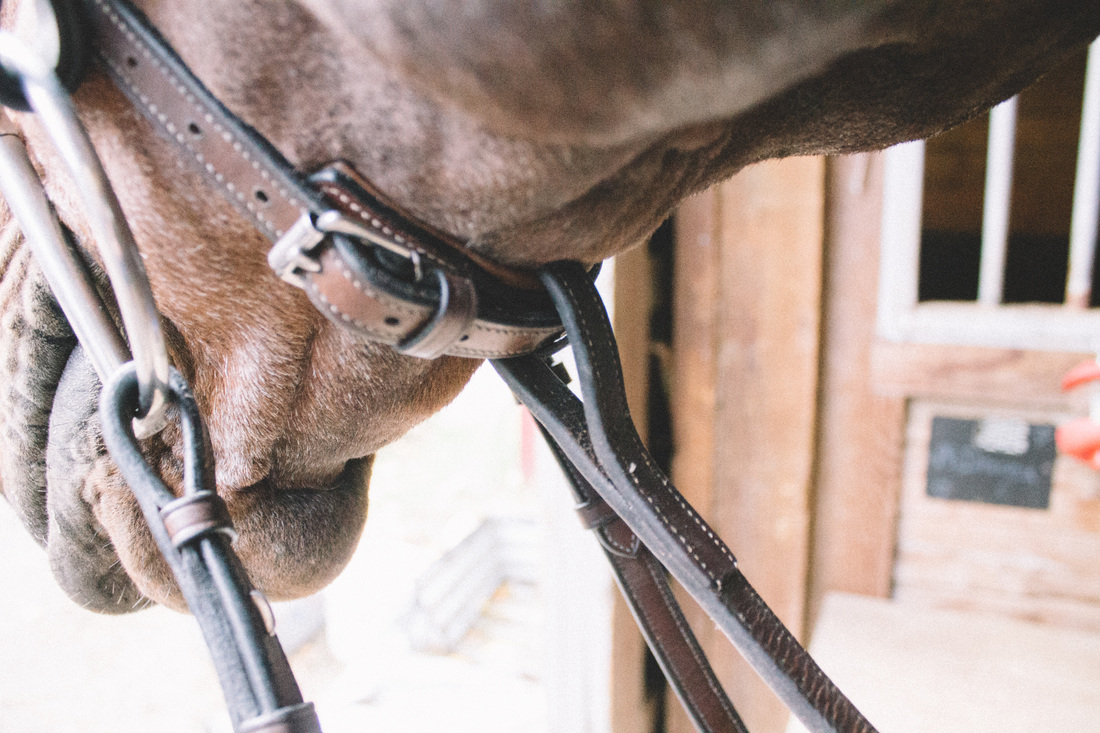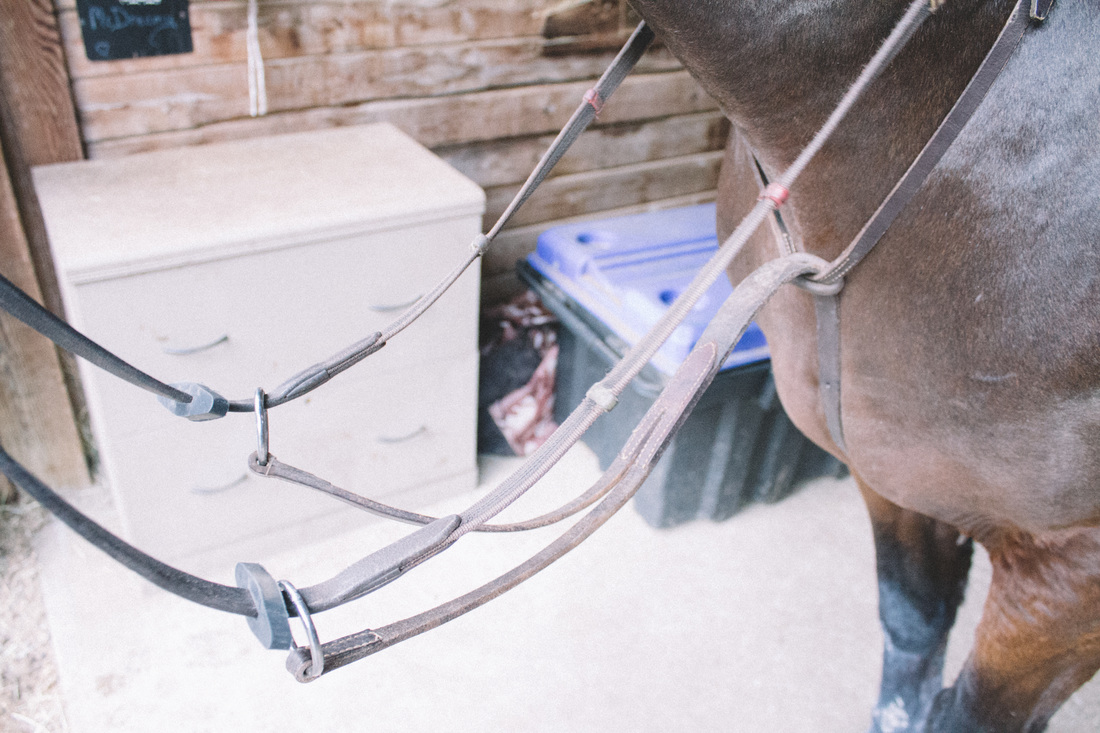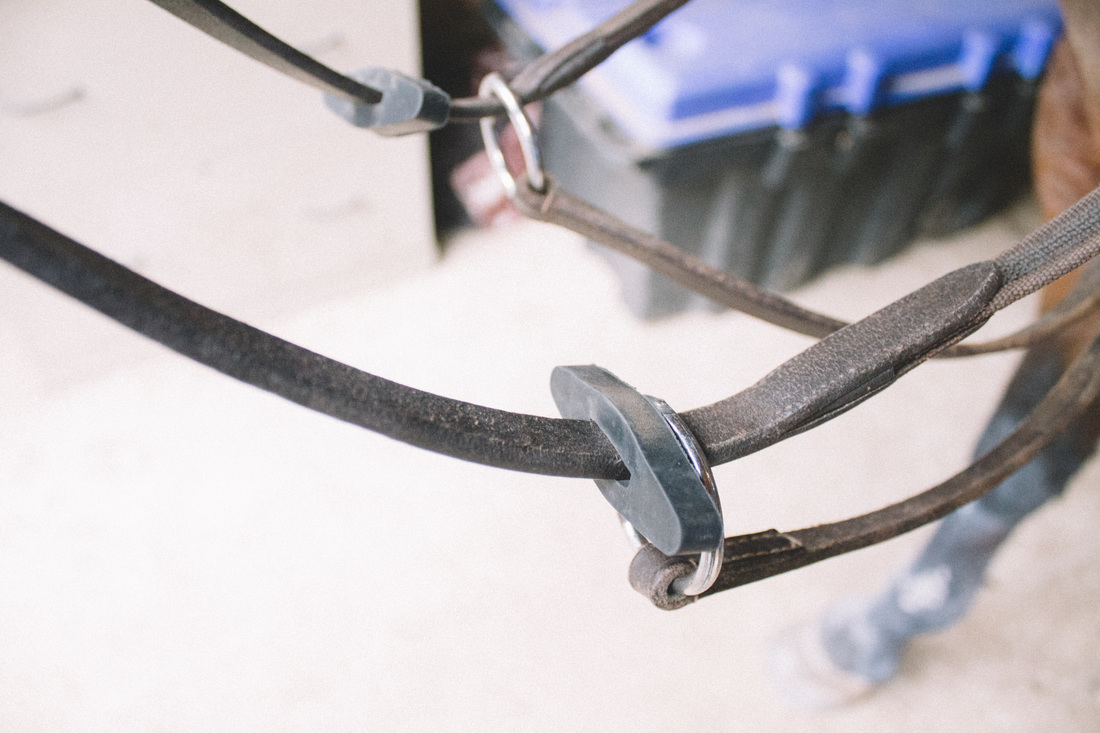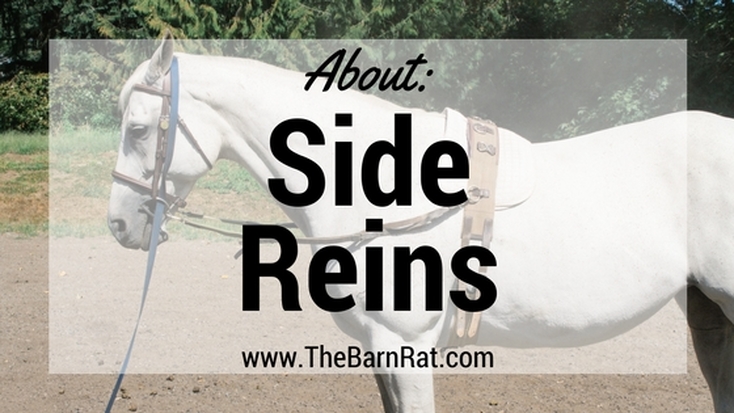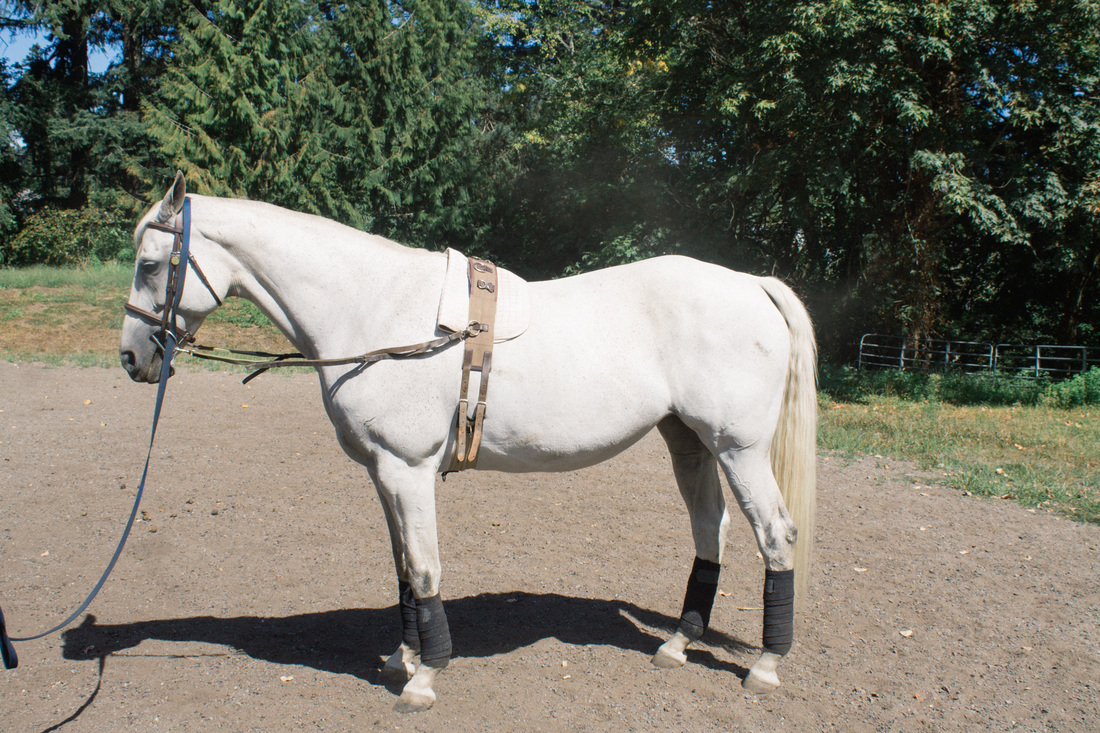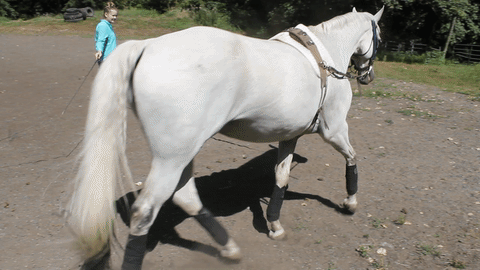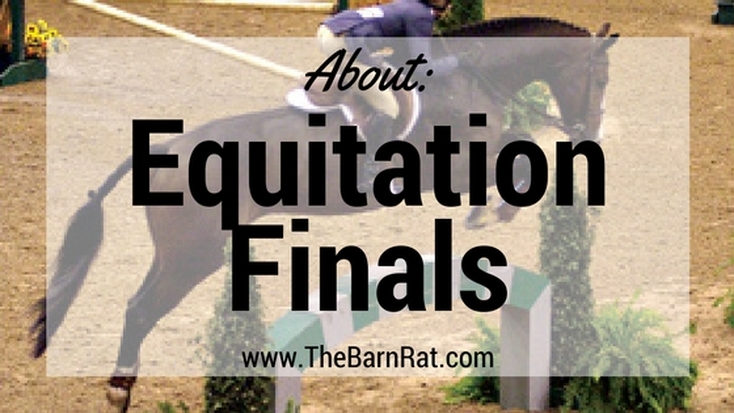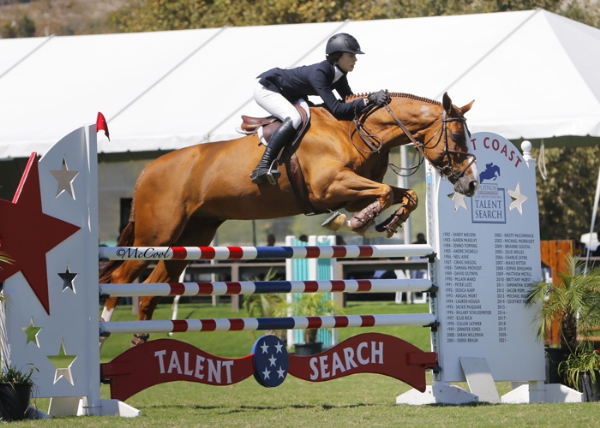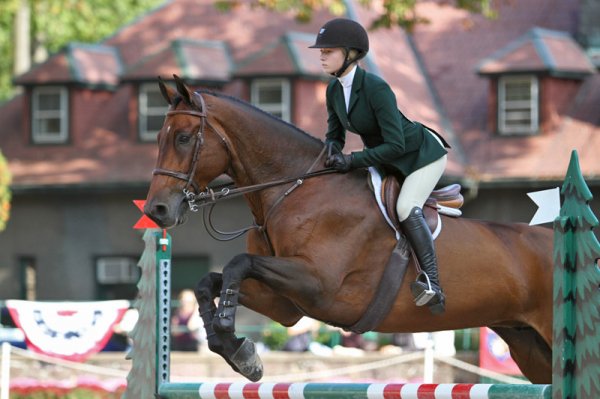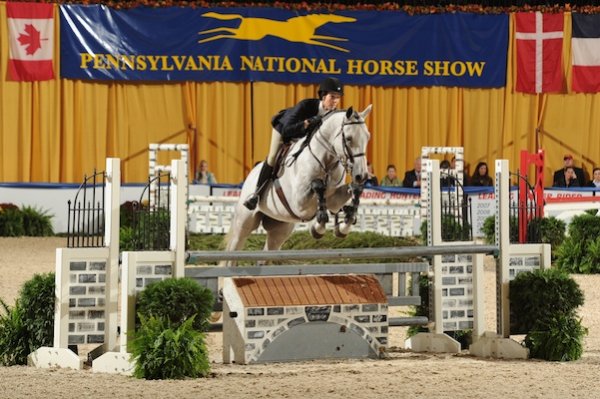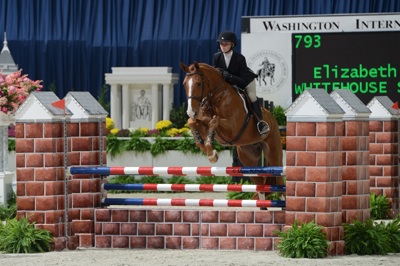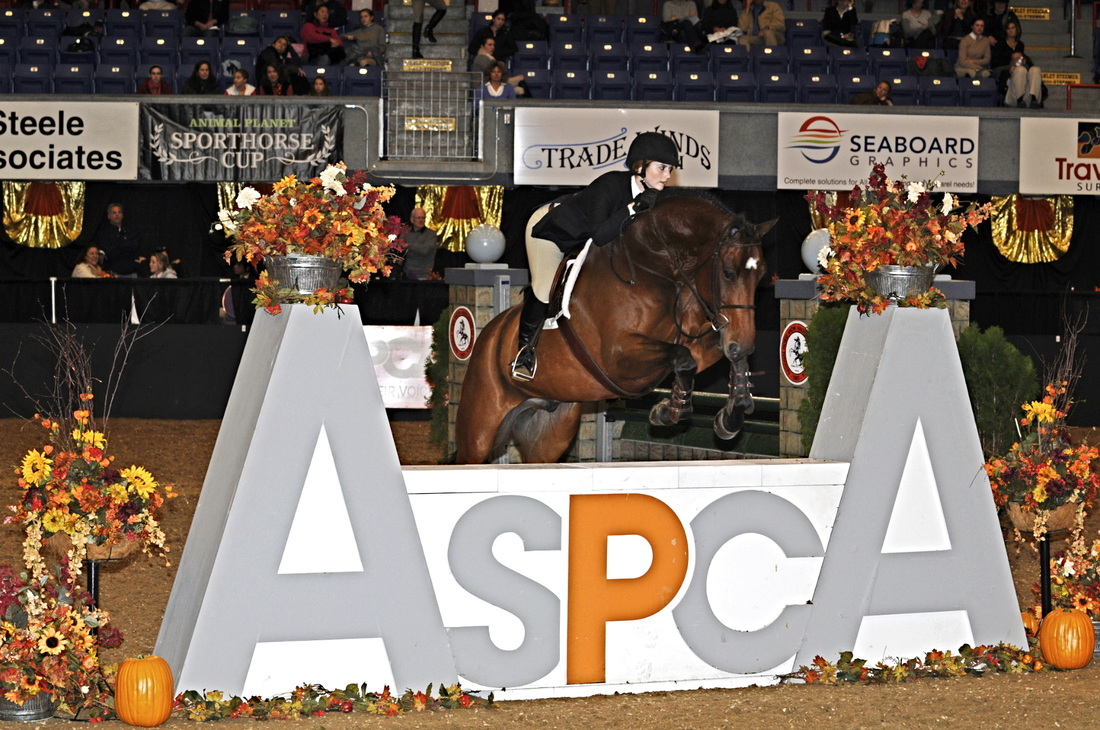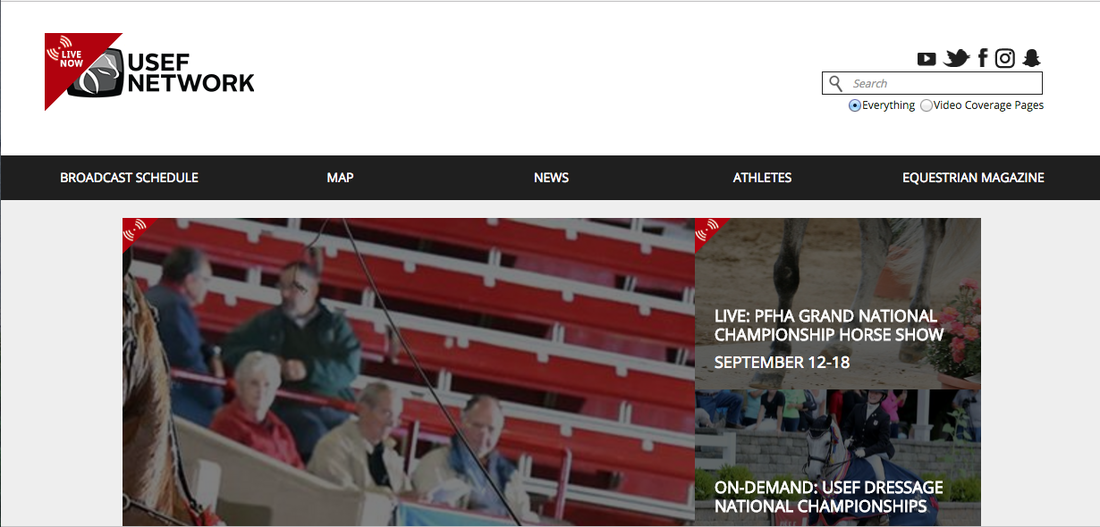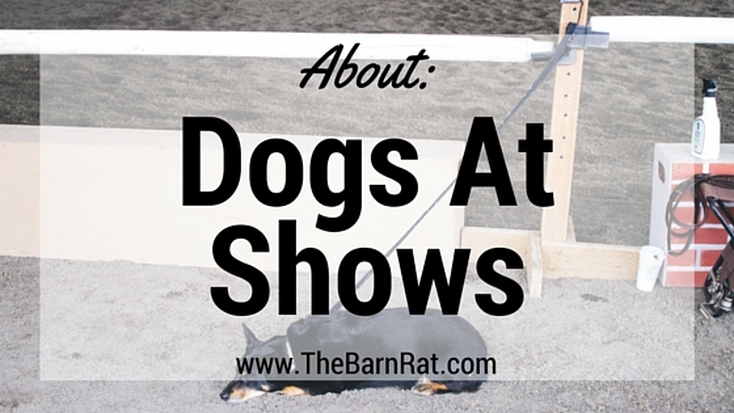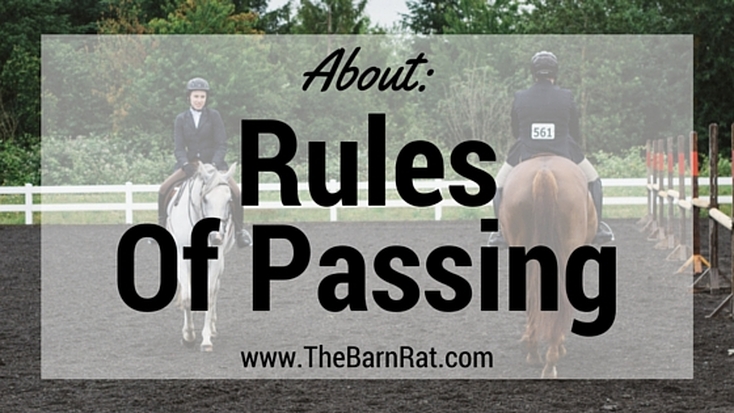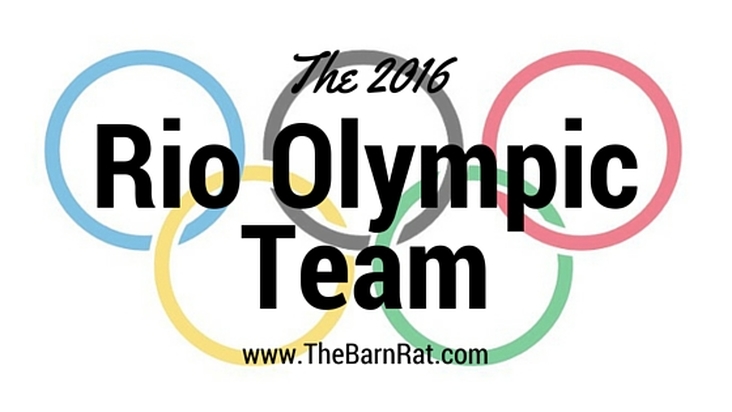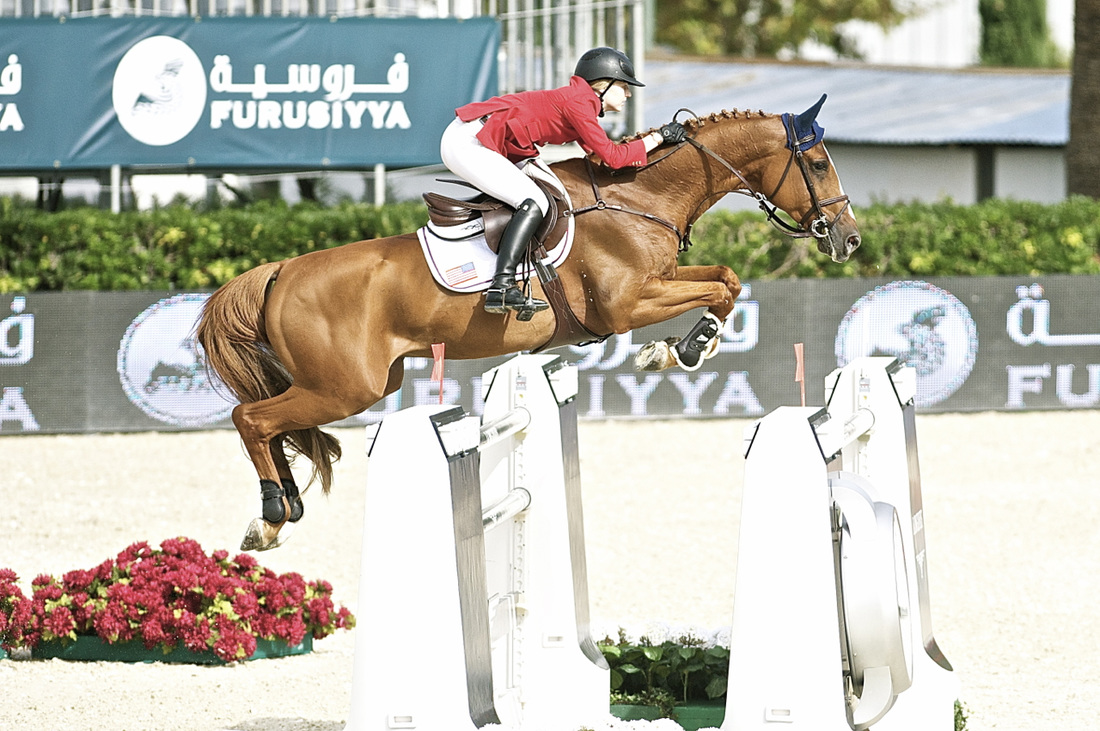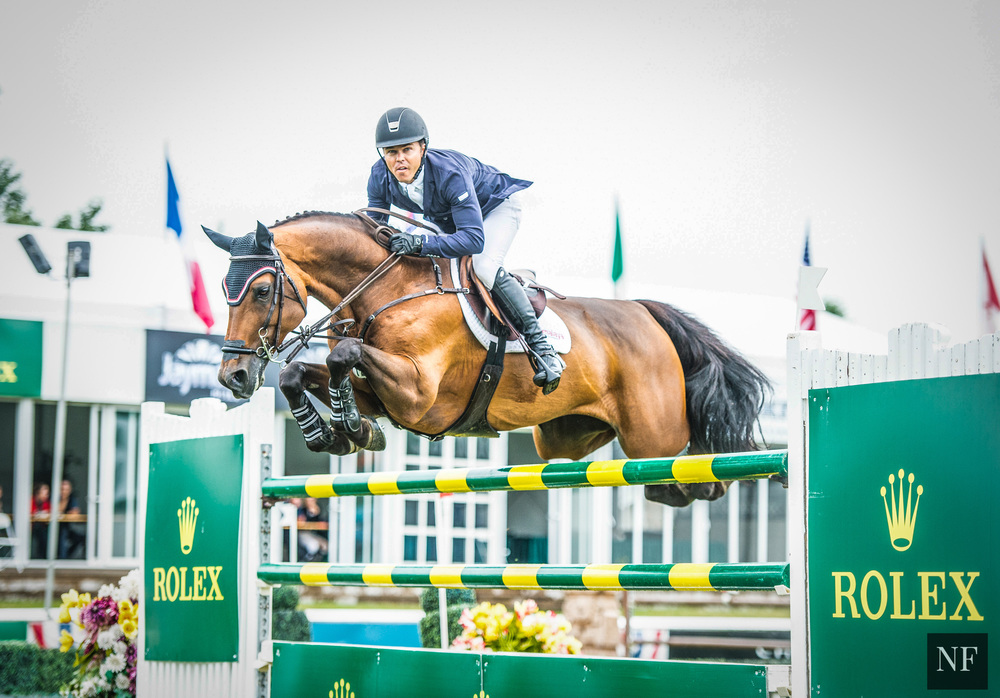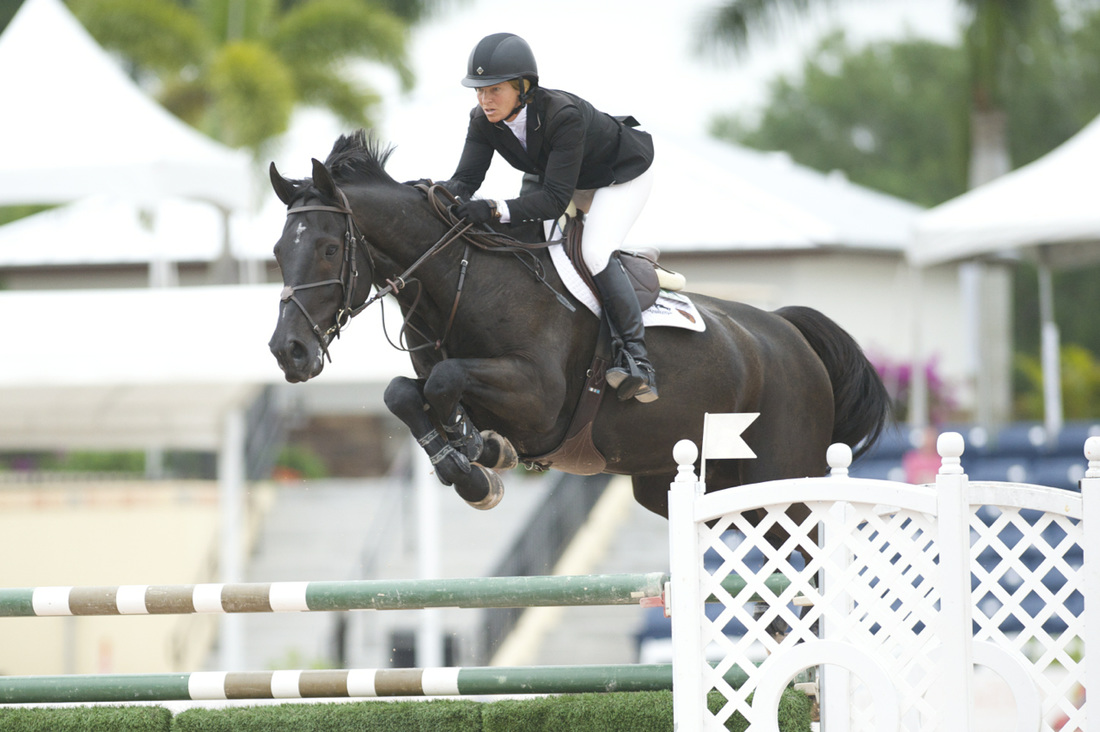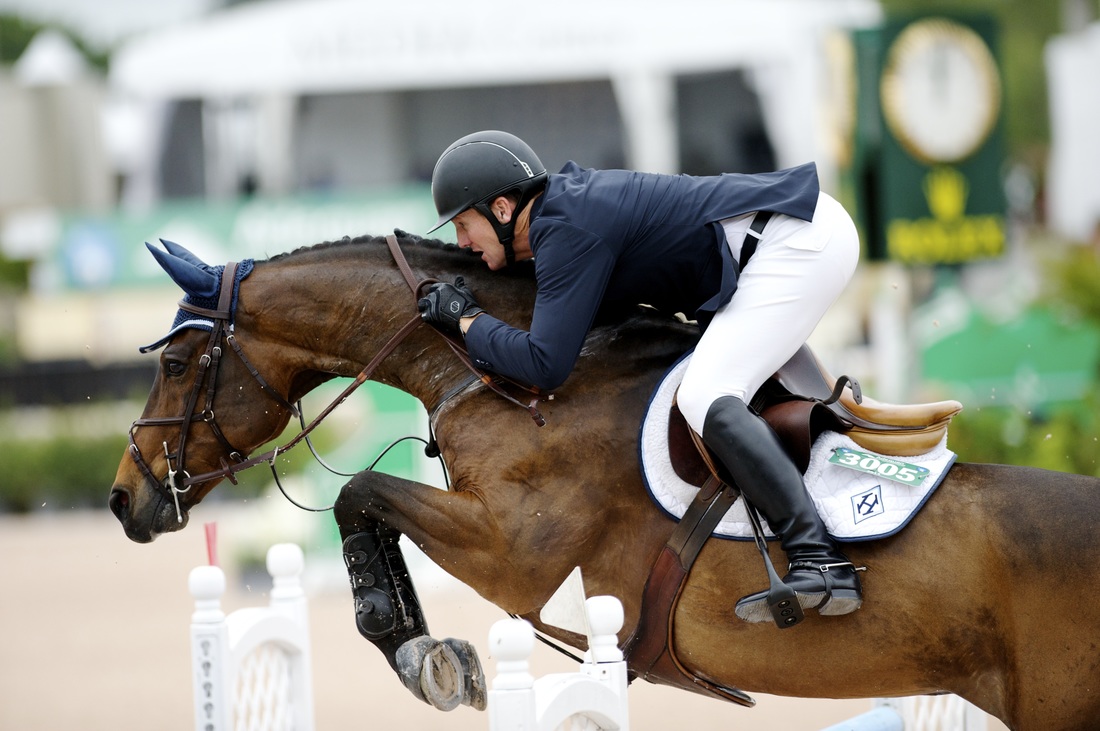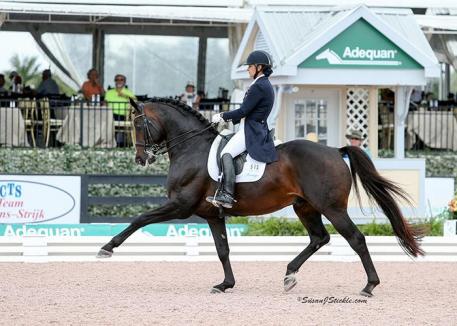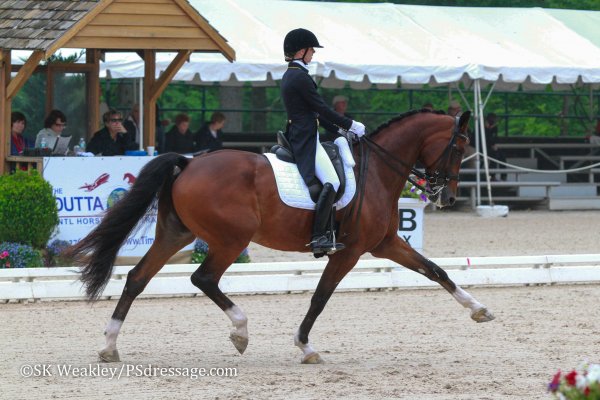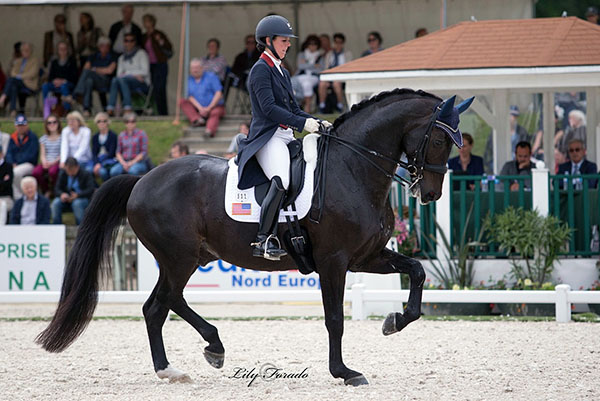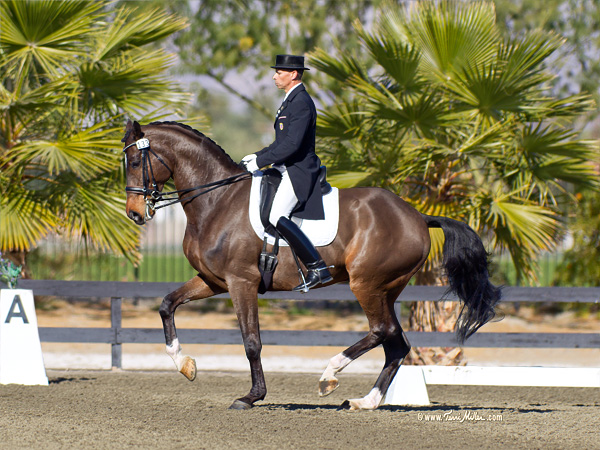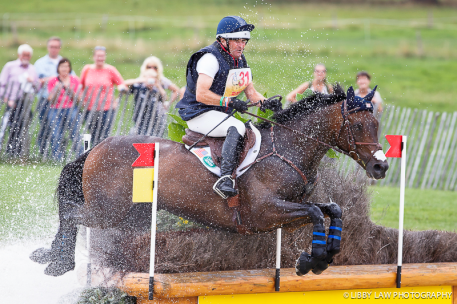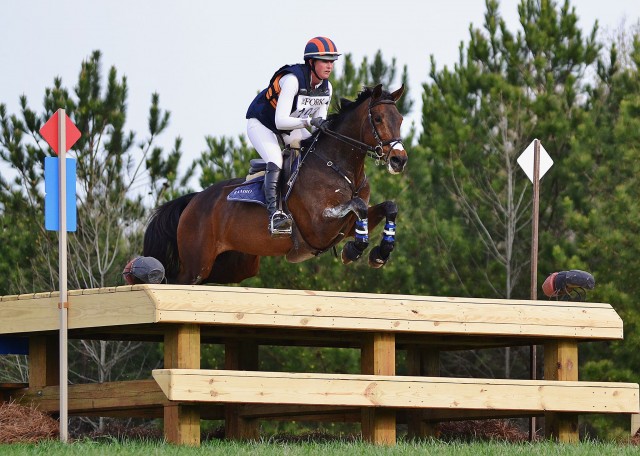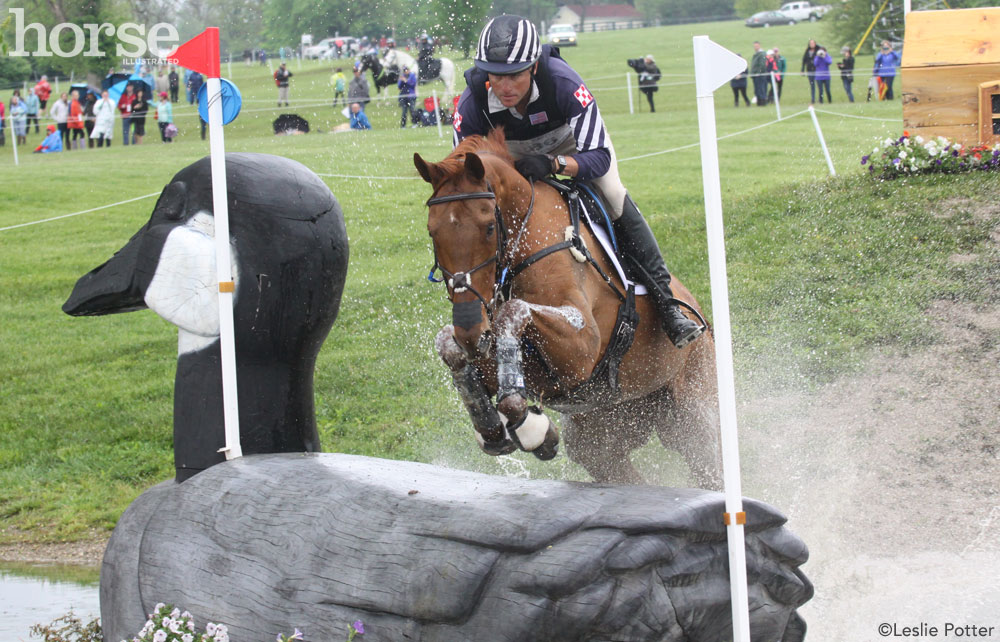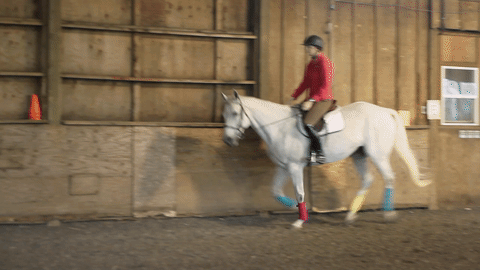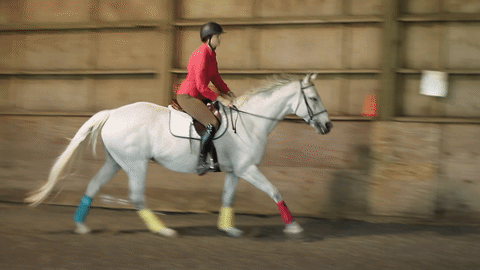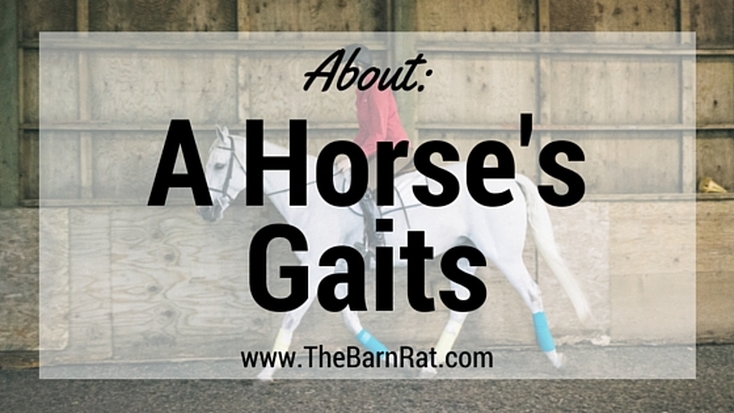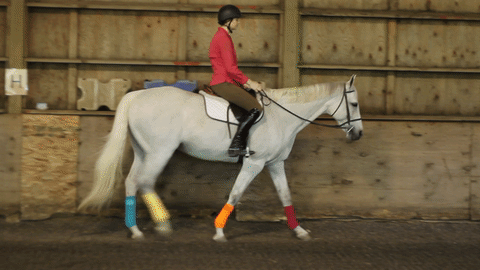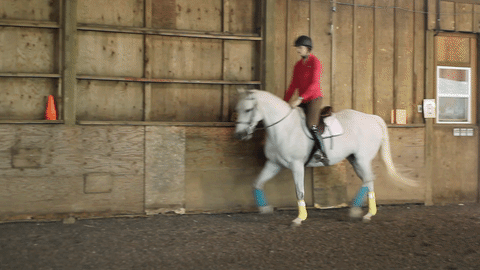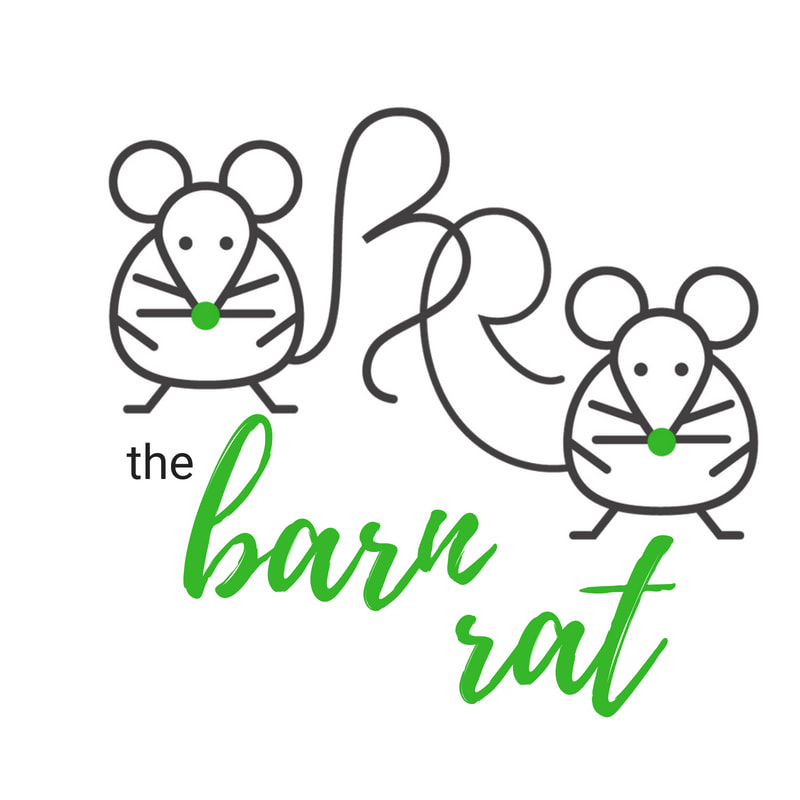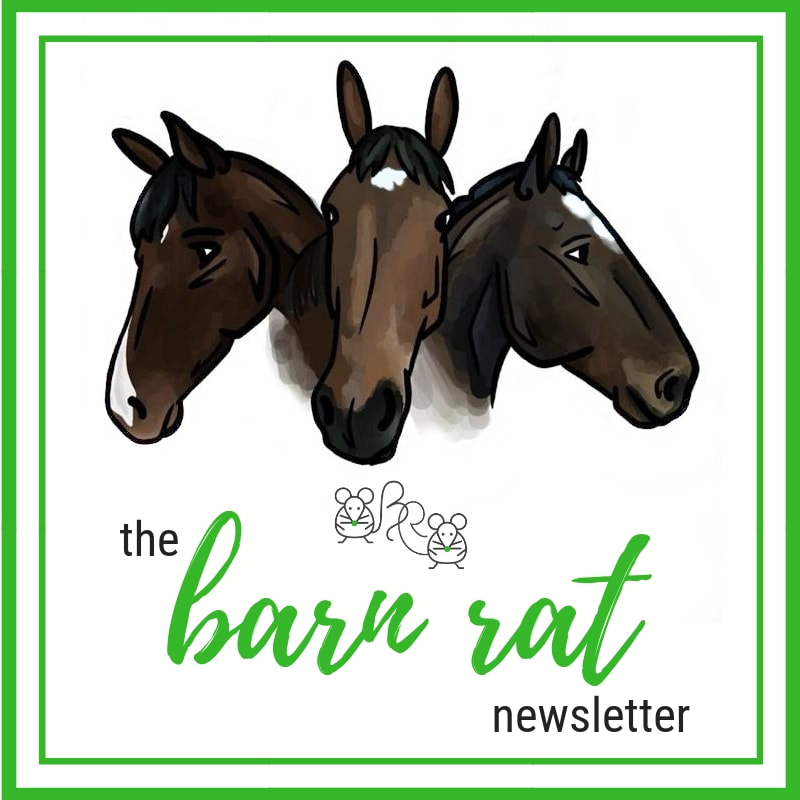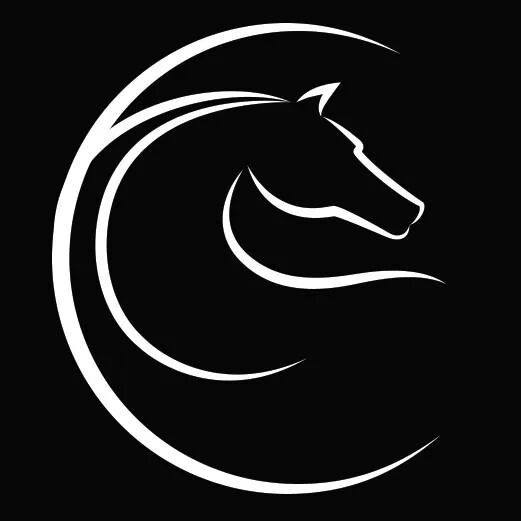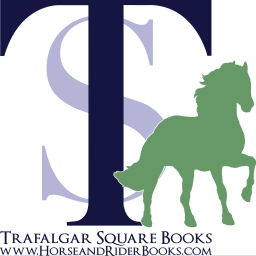|
There are many different pieces of equipment you can use to help train your horse or to help keep them fit. Many people are opposed to equipment because they feel it can be too harsh, used in the wrong hands anything can be made abusive. Used correctly, however, training equipment can improve your horse's way of going. The saying "work smarter, not harder" comes to mind. Today we will be discussing the neck stretcher. This elastic attachment is to help encourage your horse's head down by putting pressure on their poll. The neck stretcher should be adjusted so when your horse moves their head into the correct position the elastic ropes relax and there is the relief of pressure. Your horse should also be able to have the freedom to reach their neck down and forward, stretching all the way through their back. The neck stretcher is a stationary piece of equipment, meaning it is not easily adjusted while riding. You would have to stop movement to change the tension in the elastic. Because of this it is important not to start out with the neck stretcher too tight, make sure you allow your horse plenty of warm up time before making it too tight.
1 Comment
Both types of martingales require a rubber donut, like the one in the red circle in the photo above. This keeps the martingale from sliding around and becoming looser. Below we will take a closer look at both different types of martingales.
It is flexible because the martingale attaches to the reins of the bridle with rings that allow it to slide around. This is also why the rubber stoppers seen in the picture above are mandatory. You don't want the ring of your martingale to somehow slide up to the bit and get caught.
Using side reins is basically the same as riding with consistent contact. As you can see above, Lilly is coming round and accepting the contact from the side reins. If you want to use side reins to help your horse get some productive exercise or want to introduce them to the concept of contact be sure to start with the reins too loose. When using any kind of equipment it is super important that you allow your horse to warm up and get used to the feeling of that equipment. As they warm up, then you can slowly tighten the reins to encourage a more correct way of going.
If you are wanting your horse to work on their inside bend you can shorten the inside rein just slightly to bring your horse's head to the inside of the circle. Make sure you work both sides evenly. And, if this is a new concept for your horse, only exercise them in short doses. Working them in a new way for too long can get you a very stiff and sore horse. Be sure to check back as we explore other pieces of equipment you can use while lunging or riding your horse! And as always, if you have any questions please feel free to reach out! If you are under the age of 18 and enjoy jumping, then you have probably heard of the big eq classes at the fancy 'A' rated horse shows and maybe even watched with awe as these kids soared over the giant obstacles. I know that was me! For many it is the end-all be-all goal to accomplish with your riding career. And for many it truly can be the extent of their riding career. After turning 18 (and depending on the show competition calendar that is kind of complicated) you can no longer compete in the Junior divisions and then there are things like college and real life that need your attention. Below you can read about each of the different Equitation finals. They are each unique, focusing on different aspects of riding. If you have any questions about these different classes please feel free to contact me!
We all love bringing our fuzzy friends to horse shows, but we have to keep them safe when they are on show grounds. I have heard, unfortunately, many horror stories of dogs getting run over because they were not taken care of properly. Often times dogs are used to running around barns off a leash because it is their home and are able to be more closely watched. At horse shows, however it is extremely important that all dogs be kept on a leash at all times! It is so dangerous for both horse and rider and the other people around if a dog were to randomly come sprinting through the warm up ring causing horses to spook and run away. And for the safety of your beloved pet, there are many, many large heavy duty vehicles that are moving around the show grounds and a loose pet runs the risk of being squished. Unfortunately, that is a real risk.
Again, if you want to bring your dog to the horse show, please keep them on a leash!!! Learning your course is a totally different thing at a show compared to when you are at home practicing. At home there is no pressure or nerves. You are not worried about what your competition is doing, what your horse is looking at or the scary jump in the far corner you are already spooking at. Many times the course your trainer is trying to teach you goes in one ear and out the other. So, here are a few tips and tricks on learning your course!
1) Assign an identifying factor to each jump. Pick the color of the flowers, the poles or the standards to help you remember which jump you are looking for out on course. Many times jumps will have similar colors so be sure to find something unique about each. 2) Repeat the course over and over in your head and aloud. After you feel comfortable that you know your course continue to go over it in your head. As you go over it you may find you get hung up on remembering one specific part. Even if you feel like you have your course down no problem be sure to repeat your course aloud to your trainer multiple times. They are responsible for knowing where you are going and making sure you don't accidentally learn the wrong pattern. 3) Watch the other riders. As the riders ahead of you are doing their round say in your head where they should be headed next and how you plan on riding the corners and turns. Not always are the riders ahead of you doing the course perfect so acknowledge their mistakes and visualize yourself doing what you want to happen. Ride your lines straight, stay deep in your corners, look early, get the right stride numbers and keeping your pace. The more you ride the course in your head the way you want it to happen the easier it will be to make it happen in real life because it will be like you have already ridden the course. Any other helpful tips you have when learning your course? Be sure to share in the comments! A few weeks ago we talked about Inside vs. Outside and what that meant when passing another horse. And that is a super important thing to remember, but there is one rule that is more important. Left shoulder to left shoulder! As you can see in the picture above the girls are passing each other with their left shoulders closest to each other. It's the same as when you are driving a car, you always pass the same way.
This rule is widely understood as THE correct way to pass another horse. However, if you plan on doing something different that is where calling inside or outside comes into play. By riding this way you avoid confusion and potential collision! I have been in the schooling ring and even at home during lessons and watched people not look where they are going and not call where they plan on being and end up running into another horse. I have heard stories of horses full blown running into each other at the canter because no one paid attention! Please, practice safety and communicate where you are going. Everyone will appreciate it! The Olympics! They are just a couple months away and yesterday the final riders were announced for the U.S. Olympic team riding in Rio de Janeiro, Brazil. Watching the Olympics, summer or winter, is a special event. The top athletes in their sport representing their country. I swell with pride and well up with tears just thinking about it. I love watching! I remember vividly watching the 2000 Sydney Olympics and stumbling across the show jumping playing in prime time (that almost NEVER happens). I was almost 9 and I pointed at the screen and declared "That is what I want to do!" I started riding lessons the following spring and haven't looked back. One day I will cross off doing the Grand Prixs. Until then, I will keep watching and cheering. Let's meet the horse and rider combos that will be making the journey all the way to Brazil. Show Jumping
Dressage
Eventing
A couple weeks ago we learned about the different gaits a horse can do. This week I want to explain the canter a little bit further. Based on which direction you are traveling around the ring that determines what lead you need to be on. Being on the correct lead allows your horse to move comfortably and balanced. I can't tell you how many times I've seen someone land off a jump and not realize they were on the wrong lead and go speeding through the corner almost falling down because their horse was not on the correct canter lead. The canter is the most comfortable gait for a horse to jump. The momentum and impulsion (the controlled energy) of this gait allow the horse to be able to power up and over a jump. A horse can jump from the trot and even the walk, it is just more difficult. Stay tuned for a post about counter cantering. That is when you canter on the wrong lead, on purpose.
gait ɡāt/ noun plural noun: gaits
synonyms: walk, step, stride, pace, tread, bearing, carriage "there was a new liveliness to her gait"
|
Categories
All
SponsorsInterested in sponsoring The Barn Rat? Be sure to contact us here!
|
